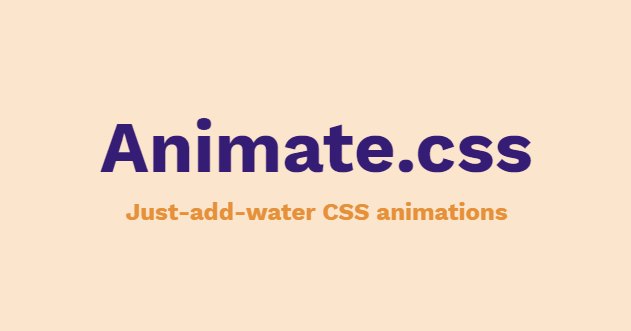How I added CSS animations to my Hugo Academic site
The other day I finally got the chance to read Connor Rothschild‘s blog post “Three Simple Steps to Bring Impressive Animations to your Hugo Academic Site Using Blogdown”, a great resource for Hugo Academic users. Even if you have no HTML/CSS knowledge or are just getting started and would like a site that’s already animated, his tutorial’s got you! He explains every step and shows how easy it is to implement. If you’re a Hugo Academic user, I highly recommend you check it out!
Upon reading his post, I was excited to get started animating my home page. With zero knowledge in CSS animations, I checked out the resources he linked and proceeded to search for animation examples that I’d like to implement on my home page. I stumbled upon
Animate.css, a library of ready-to-use, cross-browser animations for use in your web projects.
The library has many different animations that you can choose from and has comprehensive documentation on how to install and use the library. I tested it out and when it worked, I decided to use this approach instead of making @keyframes rules as suggested in Connor’s tutorial. It’s a lazy, shortcut approach, but it works for my needs right now 😅
To use the library, I added it directly to my home page using a CDN by pasting the following code found in their installation guide in my about widget’s HTML before <!-- About widget -->
(code here):
<head>
<link
rel="stylesheet"
href="https://cdnjs.cloudflare.com/ajax/libs/animate.css/4.0.0/animate.min.css"
/>
</head>
Then, as in Connor’s tutorial, I added classes to the elements I wanted to animate. For example, I made my name displayed at the top of my home page of class about-name:
<h1 class="about-name">Isabella Benabaye</h1>
I targeted that class in my custom.scss file to assign the animation I wanted for it. Since the animations are defined in the CDN, all I needed to define were the following animation properties animation-name, animation-duration, animation-fill-mode, and animation-delay in the following format: animation: <animation_name> <animation-duration> <animation-fill_mode> then animation-delay defined separately for clarity.
.about-name {
animation: flipInX 1s both;
animation-delay: 0.5s;
}
I did that for each of the classes I wanted to animate, and that’s it! Since I already added the style sheet to the head of my HTML file for my about widget on my home page, I didn’t need to add it to the HTML of my projects widget. When adding animations to my about page, I added the style sheet once again to my first widget’s HTML head to be able to use the animations on that webpage.
